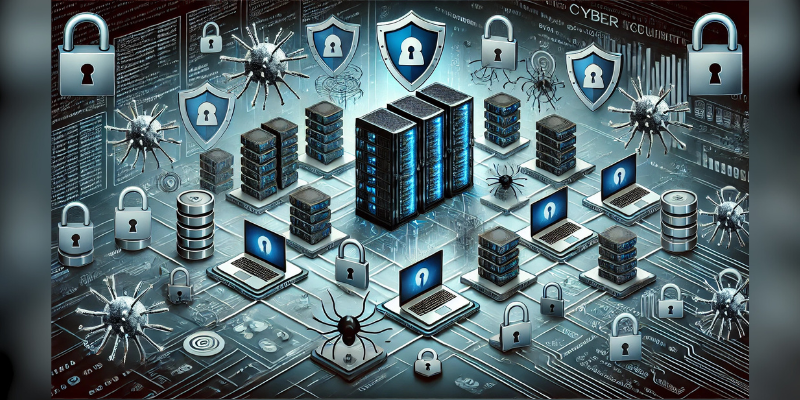
The increasing complexity of cyber threats has made it clear that securing digital assets requires more than just reactive measures. Organizations need a structured, proactive approach to safeguard their systems and data. This is where cybersecurity frameworks come into play. Rather than leaving security to chance, these frameworks provide a clear roadmap for identifying vulnerabilities, implementing protections, and responding effectively to incidents. But what exactly are these frameworks, and why are they so crucial in today’s cybersecurity landscape?
Cyber Framework
A cybersecurity framework is essentially a structured set of guidelines that helps organizations manage and reduce their cybersecurity risks. Think of it as a blueprint that outlines the best practices for securing digital information and systems from potential threats. It helps businesses and individuals implement security measures in an organized way, ensuring that no critical steps are missed in protecting sensitive data.
On a more technical level, a cybersecurity framework is made up of specific components, such as standards, policies, and procedures, designed to address different areas of security. It usually includes key elements like risk management, access control, incident response, and continuous monitoring.
Implementing a cybersecurity framework is crucial because it provides a structured approach to managing security risks. Without a clear framework in place, organizations can struggle to identify vulnerabilities, leaving critical systems and data exposed to cyber threats.
A well-implemented framework not only helps prevent breaches but also ensures that, if an attack occurs, there are procedures in place to respond quickly and minimize damage.
Furthermore, frameworks help organizations meet industry regulations, which is especially important for businesses handling sensitive information. Simply put, they shift cybersecurity from a reactive process to a proactive, strategic defense system.
For example, frameworks like the NIST Cybersecurity Framework and ISO/IEC 27001 provide a systematic approach to identifying threats, protecting assets, detecting breaches, responding to incidents, and recovering from attacks. By following these guidelines, organizations can establish a strong cybersecurity posture that evolves with emerging risks.

Top Use Cybersecurity Framework
There are several types of cybersecurity frameworks commonly used by organizations to enhance their security posture. Each framework is designed with different goals in mind, depending on the industry, regulatory requirements, and specific security needs. Here are some of the most widely used types:
NIST Cybersecurity Framework
Developed by the National Institute of Standards and Technology (NIST), this framework provides a comprehensive guideline for improving cybersecurity practices. It is widely adopted due to its flexibility and adaptability to various industries. The framework focuses on five core functions: Identify, Protect, Detect, Respond, and Recover.
ISO/IEC 27001
This international standard focuses on establishing, implementing, maintaining, and continuously improving an information security management system (ISMS). ISO/IEC 27001 provides a systematic approach to managing sensitive company information, ensuring it remains secure.
CIS Controls
Created by the Center for Internet Security, the CIS Controls are a set of best practices for cybersecurity, focusing on actions that provide the highest return on investment in terms of reducing cyber risks. It is divided into 20 critical controls that are prioritized based on real-world effectiveness.
COBIT (Control Objectives for Information and Related Technologies)
This framework is aimed at IT governance and management. COBIT helps organizations meet business requirements by linking security with corporate governance strategies. It is particularly useful for aligning cybersecurity efforts with broader business goals.
PCI DSS (Payment Card Industry Data Security Standard)
This framework is specifically designed for organizations that handle credit card transactions. It sets the technical and operational requirements to protect cardholder data and ensure secure payment processing.

Why exactly we need Cybersecurity Framework?
To wrap things up, the importance of implementing a cybersecurity framework goes beyond just technical measures—it’s about giving cybersecurity teams the clarity and direction they need. With a framework in place, cybersecurity teams can approach their work with a structured plan rather than scrambling to address each threat in an ad-hoc manner. This organized approach allows them to be more proactive and confident in securing systems and data.
Moreover, frameworks play a crucial role in ensuring compliance with both internal policies and external regulations. Whether it’s meeting national cybersecurity laws or adhering to industry-specific requirements, having a framework in place ensures your organization remains compliant. This is essential not only to avoid legal penalties but also to maintain trust with clients and stakeholders.
Additionally, a robust cybersecurity framework simplifies the audit process. When security audits take place—whether internal or external—the framework serves as proof that your organization follows best practices. This helps reduce the likelihood of audit findings and ensures that your organization meets the necessary security standards with ease.
Beyond compliance, using a cybersecurity framework also elevates your organization’s reputation. In a world where data breaches can severely harm a company’s image, demonstrating a commitment to cybersecurity through the use of a well-known framework adds a layer of trust. Clients, partners, and stakeholders see this as a strong indicator of reliability and responsibility.
In the end, a cybersecurity framework isn’t just about protection—it’s a valuable asset that drives performance, ensures compliance, and boosts your organization’s reputation. When security is organized and structured, everyone benefits—from your team to your clients, and even your bottom line.




